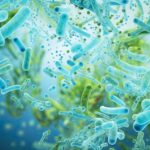• High-fat changes
• Metabolite effect
What is already known on this topic
Antibiotic tolerance, the ability of microorganisms to survive exposure to antibiotics, can promote the development of antibiotic resistance, which is the ability of the same microorganisms to grow in the presence of antibiotics. However, little is known about how microbes become tolerant to antibiotics.What this research adds
Researchers assessed the efficacy of several antibiotics in mice fed a high-fat diet and infected with strains of Staphylococcus aureus or Escherichia coli that are resistant to antibiotics. Mice on a high-fat diet had higher levels of these bacteria, which were less susceptible to antibiotics than the bacteria infecting rodents fed a standard diet. Transferring the gut microbiota from mice on a high-fat diet to mice fed a standard diet reduced antibiotic efficacy in the latter. Fecal samples from mice on a high-fat diet showed low levels of a metabolite that, when given as a supplement, inhibited the development of bacterial tolerance.Conclusion
The findings show that a high-fat diet is associated with changes in the gut microbiota and microbial metabolites. These changes could impair antibiotic efficacy in mice.
Antibiotic resistance — the ability of microbes to fight off antibiotics — is a major threat to public health. New research suggests that a high-fat diet can change the gut microbiota in ways that could impair antibiotic efficacy — at least in mice.
The findings, published in Nature Microbiology, could help to treat and manage bacterial infections caused by pathogens that are tolerant to antibiotics.
Antibiotic tolerance is the ability of microorganisms to survive exposure to antibiotics, and it can promote the development of antibiotic resistance, which is the ability of the same microorganisms to actually grow in the presence of antibiotics. However, little is known about how microbes become tolerant to antibiotics.
Because a high-fat diet has been associated with several human conditions, Yuan Liu and Zhiqiang Wang at Yangzhou University and their colleagues set out to find out whether a diet rich in fats could also promote the development of antibiotic tolerance. To do so, the team assessed the efficacy of several antibiotics in mice fed a high-fat diet and infected with strains of Staphylococcus aureus or Escherichia coli that are resistant to the antibiotic methicillin.
High-fat changes
Compared with mice fed a standard diet, those fed a high-fat diet gained body weight, and their hearts, livers, spleens, lungs and kidneys showed a substantial accumulation of fat. Mice on a high-fat diet also had higher levels of methicillin-resistant Staphylococcus aureus or Escherichia coli. These bacteria appeared to be less susceptible to antibiotics than the bacteria infecting rodents fed a standard diet.
To assess whether gut microbes could play a role in this process, the researchers looked at the composition of the gut microbiota in the two groups of mice. The microbiota composition of mice fed a standard diet was dominated by Bacteroidaceae and Akkermansiaceae, whereas the gut microbiota of mice on a high-fat diet was dominated by Lachnospiraceae and Muribaculaceae. Akkermansiaceae, and Akkermansia muciniphila in particular, are known to have protective effects in diet-induced obesity and other conditions.
When the researchers transferred the gut microbiota from mice on a high-fat diet to mice fed a standard diet, they noticed that antibiotics were less effective in fighting off infections in the animals on a standard diet. This suggests that gut microbes may play a role in the development of antibiotic tolerance.
Metabolite effect
Further analyses showed that the changes in gut microbiota composition in mice fed a high-fat diet were associated with altered levels of thousands of gut metabolites, including several compounds that mediate fat absorption.
The levels of one particular metabolite called indole-3-acetic acid (IAA) were substantially lower in mice on a high-fat diet than in those fed a standard diet. IAA is produced by Bacteroidaceae, so its decreased levels may be linked to the reduction in the abundance of Bacteroidaceae observed in the animals fed a diet rich in fats, the researchers note.
In a series of experiments, IAA appeared to inhibit the formation of tolerant bacteria and increased the efficacy antibiotic treatment. What’s more, combining IAA with the antibiotic ciprofloxacin increased the survival rate of mice fed a high-fat diet and infected with methicillin-resistant Staphylococcus aureus.
“We conclude that the long-term feeding of mice with a [high-fat diet] results in an alteration in the gut microbiota and subsequently changes the levels of some of the specific metabolites, therefore reducing antibiotic efficacy against bacterial infections in mouse models,” the researchers say.











